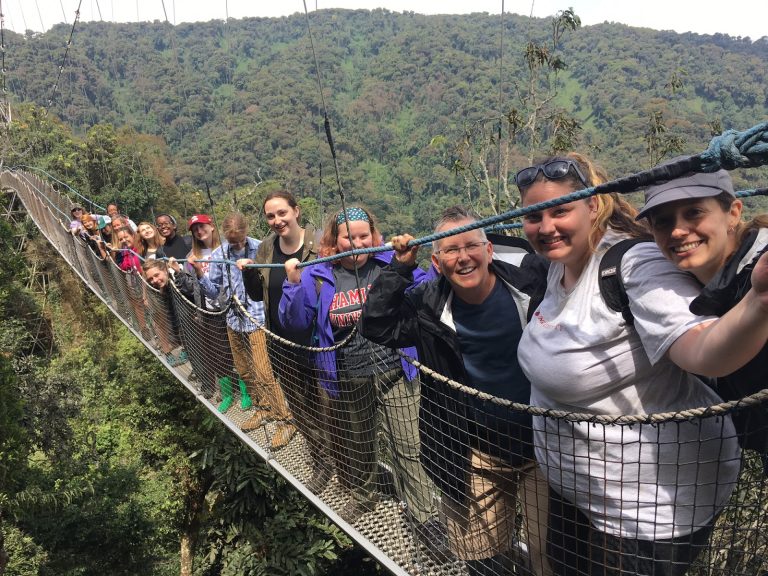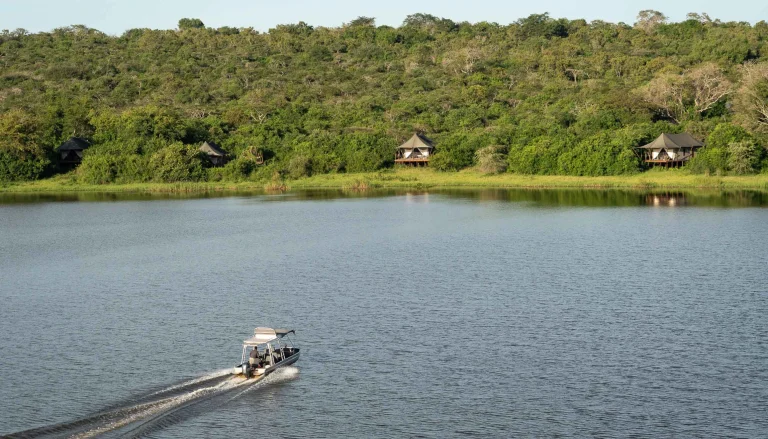- Blogs & Tips
Akagera Location
- Last updated: 5 months ago
- By Editorial Team
Akagera Location – Where is Akagera National Park?
The road curves gently, like it knows the rhythm of the land. Dust hangs in the air, tinted gold by late morning sun. A motorcycle passes—three children and a sack of charcoal squeezed tightly. Then the noise fades, and you are back to silence. Not an empty silence, but a full one. The kind that holds birdsong, rustling papyrus, the rustle of hoofbeats on dry soil.
This is the road to Akagera.
You don’t stumble upon it. You arrive with intention. And when you do, you realize this isn’t just a place—it’s a living memory of Rwanda before fences, before rush. A wild edge. A heartbeat that hasn’t forgotten how to beat in rhythm with the land.
Where is Akagera National Park?
Akagera lies in Rwanda’s far eastern shoulder, curled against the border with Tanzania. It stretches along the Kagera River, which gives the park its name. If you’re looking at a map, trace your finger from Kigali heading east, then slightly slide it north.
About 110 kilometers later, you’ll find it—the only place in Rwanda where savannah meets wetland, where giraffes share space with hippos, and lions rest not far from fishermen.
From Kigali, it’s just a 2.5 to 3-hour drive. Not long, but just enough for the city to fall away and for your senses to switch on. You’ll pass through Rwamagana—small shops, boda bodas, children walking to school in maroon sweaters—then move eastward toward Kayonza, the last real town before the wilderness begins to speak.
As you near the southern gate at Kiyonza, the terrain changes subtly. Hills flatten. Grass grows taller. The air feels thicker, softer. And then, almost suddenly, you’re in Akagera.
What Makes Akagera’s Location So Unique?
Geography often hides poetry. But Akagera wears its soul on the surface.
To the east, Tanzania stretches out like a cousin waving across the river. To the west, Rwanda’s hills lean in, as if listening. The park is part of the greater Albertine Rift, an ecological bridge between Central and East Africa. Here, highland and lowland mingle like old friends, and that’s why Akagera feels different from the forests of Volcanoes or the canopy walks of Nyungwe.
This is savannah country. But it’s also wetland. Imagine lakes that shimmer quietly in the midday heat—Lake Ihema, Lake Shakani, Lake Rwanyakizinga—each one cradled in reed and whisper. It’s where elephants wade to cool off, where shoebill storks wait like statues, and where you might see a fisherman casting his net just as the sun dips behind the acacia trees.
The park stretches over 1,120 square kilometers, protecting everything from open plains to tangled swamps. It feels like the wild has choices here—where to roam, where to rest, where to disappear for a while.
How Do You Get to Akagera National Park?
It’s easier than you think. Rwanda, small and gentle, never makes you choose between convenience and beauty.
Most travelers arrive via Kigali. Whether you land from Doha, Amsterdam, Nairobi, or Istanbul, Kigali International Airport is just 120 kilometers from the park gate. From there, you can hire a private transfer, rent a 4×4, or better yet—let someone else handle the logistics so you can focus on watching the land change around you.
Friendly Gorillas Safaris offers guided transfers that feel more like soft landings. Your guide isn’t just a driver. They’ll point out sugarcane fields, answer your questions about thatched houses, stop for roasted maize by the roadside, and tell you where their grandparents used to herd cattle before this land was a park.
If you’re self-driving, the route is straightforward—take the Rwamagana-Kayonza road and follow signs toward Kabarondo. But be warned: once you reach Akagera, you might wish someone else was behind the wheel so you can lean back and just watch.
Akagera Location Pictorial
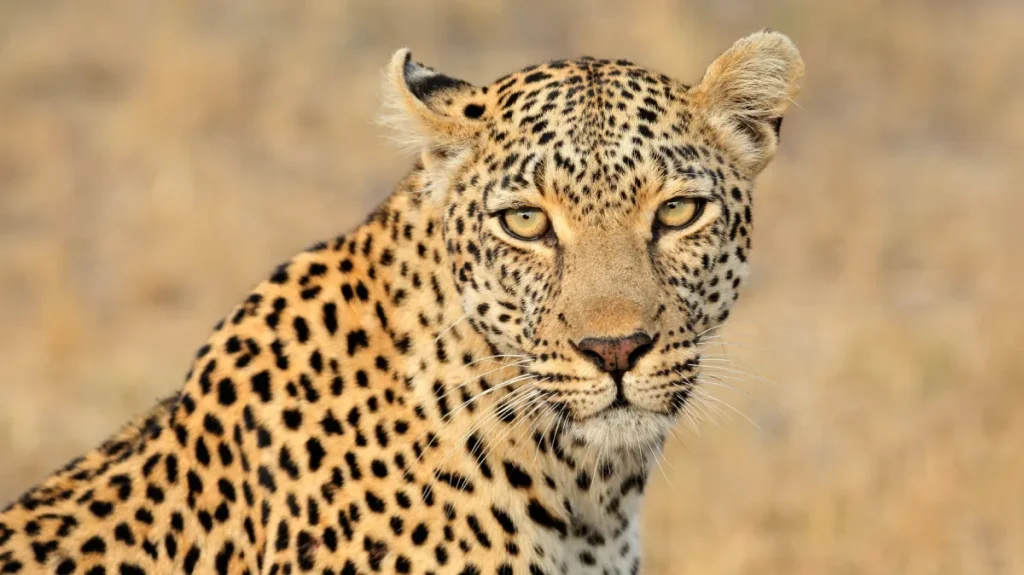
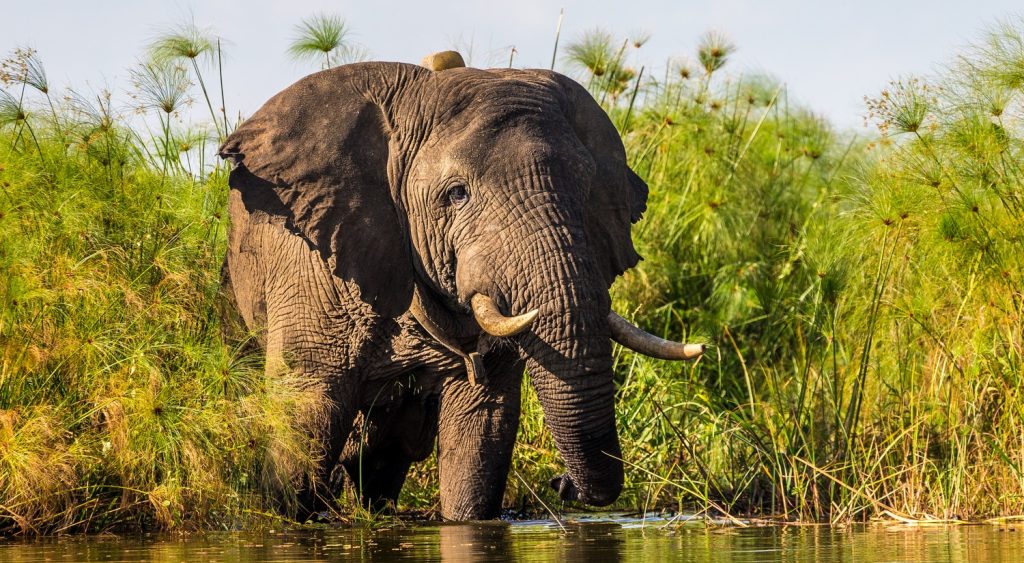
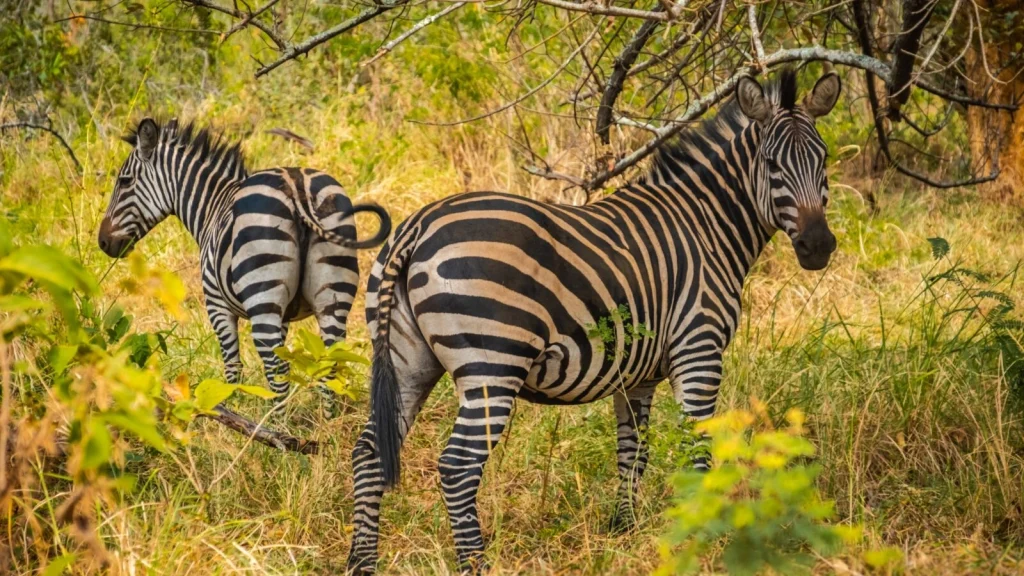
How Far is Akagera from Other Key Places in Rwanda?
- From Kigali: About 110 km – 2.5 to 3 hours
- From Volcanoes National Park: Around 280 km – 6 to 7 hours
- From Nyungwe Forest: 320+ km – around 7 hours
- From Lake Kivu (Gisenyi): 270 km – 6 to 7 hours
It’s perfectly placed to either begin or end your Rwanda circuit. Some travelers start with the intensity of gorilla trekking and end in Akagera, letting the savannah slow them down. Others do the reverse—beginning with sunsets and safaris, then ascending into mist and mountains.
What Will You See When You Arrive?
Akagera’s entrance doesn’t shout. There’s no flashing sign. Just a gate, a ranger’s smile, and the feeling that something is about to shift.
Inside, the dirt road splits and meanders like a river. To the south are lakes and gentle woodlands. It’s where you’ll find buffalo resting in the mud and hippos grumbling in the water. Head north, and the terrain opens up—savannah, golden and wide, dotted with acacia trees and silent observers.
Giraffes stand still as trees. Zebras scatter like dancers when your tires crunch gravel. Elephants emerge slowly, like old spirits checking who you are. And lions, recently reintroduced, leave pawprints that tell their own stories.
And then there are the lakes—so many lakes. Some you’ll boat across. Others you’ll stop beside just to breathe. Lake Ihema is the largest, its surface so still some mornings it looks like a sheet of glass laid down by the wind itself.
Why Does Akagera’s Location Matter?
Because it tells a different story.
Much of Rwanda is known for mist and mountain—of gorillas and green. But Akagera shows another face of this country: dry grass crackling underfoot, sunsets the color of embers, herds moving like smoke across the plains.
Its border location also makes it a crucial ecological corridor. Wildlife wanders in from Tanzania, birds migrate through its wetlands, and communities around it rely on it not just for income—but for meaning. Akagera isn’t fenced off from life. It breathes with it.
Friendly Gorillas Safaris often arranges cultural extensions with local communities near the park, where you’ll learn about bee-keeping, traditional fishing, or spend an afternoon helping to prepare isombe with women who stir pots as if weaving stories.
This isn’t just about location on a map. It’s about place. And Akagera, in its quiet resilience, holds a place for everyone who seeks it.
What Makes Akagera Feel Like Africa?
It’s the silence that comes with space. The way the air tastes before a storm. The way dusk stretches across the horizon like a slow story.
It’s hearing hyenas laugh in the distance as you sit by the fire, or watching waterbuck sip at the lake while fish eagles call overhead. It’s simple. Raw. It doesn’t perform for tourists. It just is.
And maybe that’s the magic. Akagera isn’t a show. It’s a memory being made in real time.
Suggested Packages
Where to Stay Once You Arrive?
You don’t need marble floors to feel peace. Akagera offers a mix of rustic comfort and subtle luxury. From Magashi Camp’s canvas suites that open to lake views, to Akagera Game Lodge’s hilltop sunrise breakfasts, or Ruzizi Tented Lodge’s eco-chic charm, there’s something for every kind of traveler.
For those who prefer something deeply personalized, Friendly Gorillas Safaris offers lodging recommendations based on pace, budget, and personality—whether you want to sip wine beside a lake or hear hippos snorting just beyond your tent.
Akagera Location FAQs
Are there flights to Akagera?
Currently, there are no commercial flights directly to Akagera. Most travelers arrive by road from Kigali. Charter flights can be arranged privately, but are more common for large groups or high-end tours.
Is Akagera close to other parks?
Rwanda’s beauty is its size. From Akagera, you can reach Volcanoes National Park (for gorillas) or Lake Kivu (for relaxation) in under a day’s drive. You can easily combine Akagera with other top destinations in a 6–10 day circuit.
Getting Lost in the Right Place
Akagera may not be the biggest or most famous park on the continent—but that’s part of its magic. It’s accessible without feeling tamed. Wild without feeling overwhelming. Close enough to reach, yet far enough to feel like a proper escape.
And once you’ve watched the sun rise over Lake Ihema or heard a lion roar through the night air at Shakani campsite, you’ll realize something:
Akagera isn’t hard to find. But it’s the kind of place that helps you find something in yourself.
Let Friendly Gorillas Safaris show you the way. The road to Rwanda’s wild east is open—are you ready to follow it?
Final Thoughts
So, where is Akagera?
It’s where your eyes start to adjust to distance. Where your ears tune in to birds you’ve never heard before. Where your feet meet red earth, and for the first time in a long time, you stop rushing.
Let Friendly Gorillas Safaris take you there—not just to the park gate, but into the quiet beauty that waits inside. Because some journeys don’t begin with a plane ticket. They begin with a feeling.
Are you ready to follow it?
Send Enquiry
Step into the wilderness Savannah of Akagera and meet the African Big 5 animals and beyond.
Feel the wild stillness of the park where every silence tells a story.
GET A QUOTE
Limited space available.


